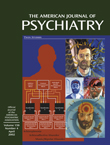To the Editor: We were intrigued by the study by John F. McDermott, M.D.
(1). Several systematic studies
(2,
3) have demonstrated a connection between affective disorders and the creativity of writers and poets, with a high incidence of these traits in first-degree relatives
(4). However, exploiting literary heritage as a tool for postmortem psychiatric diagnosis is rather complicated. Such a study poses both phenomenological argumentation and ethical debate, especially when no reliable psychiatric documentation exists. We encountered similar difficulties in our study of the enigmatic medical biography of the famous 19th-century Russian writer Nikolai Gogol
(5). We found it most useful to adopt methods suggested by Jamison
(6) and implemented by Weisberg
(7) in a study of the composer Robert Schumann. The quantity and quality of Schumann’s compositions per year were compared with the composer’s changes of mood on the basis of his diaries and letters and the recollections of his contemporaries.
We applied that method to an examination of the creative productivity of Nikolai Gogol, whose eccentric behavior was enigmatic for both his contemporaries and later generations. The results were astonishing. We identified five phases during Gogol’s adult life, strikingly matching the writer’s productivity and his mental condition: prodromal, predominant elation, prominent mood swings, overpowering depressions, and decline. Both the quantity and the quality of Gogol’s literary work matched the stages of his chronic illness. In August 1841, Gogol completed the first part of his famous work Dead Souls. Then his creativity declined, both in quality and quantity. Between 1842 and 1848 he wrote 1,105 pages, mostly letters. The amount further declined to only 278 pages, until his death in 1852. In addition, Gogol burned the manuscript of the second part of Dead Souls twice during his depressive episodes.
We also found it most valuable to cross-examine our assumptions with descriptions given in Gogol’s personal letters and the reminiscences of his contemporaries, reflecting his mental status at various periods of his work. In our opinion, Gogol was suffering from bipolar II disorder and had a narcissistic personality disorder. We agree with Dr. McDermott’s statement that diagnostic impression without examination is conjecture at best. Still, it is a price worth paying for deeper insight into the interface between affective illness and creative genius.

